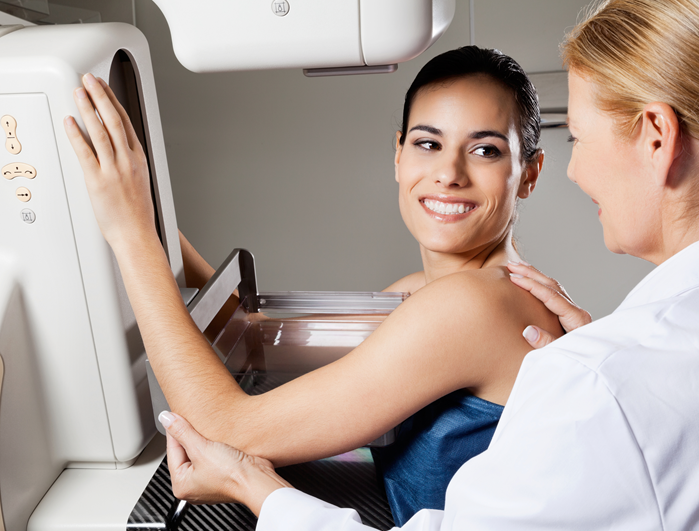What is The Most Common Presenting Symptom of Breast Cancer?
A lump in the breast is the most common presenting symptom of breast cancer. They are generally single, hard and painless and may be irregular in shape. It is important to note that most breast lumps are benign, especially before the age of 50. Other symptoms that may indicate breast cancer include:
-
Pain
-
Bleeding
-
Changes in size or shape of the breast
-
A lump or swelling in the arm or armpit
-
Dimpling of the skin of the breast
-
Inversion of the nipple
-
Ulceration of the skin
-
Discharge from the nipple.
Breast Pain (mastalgia)
Breast pain (mastalgia) is a very common symptom. It accounts for approximately one third of patients attending breast clinics. It's often divided into cyclical (linked to your menstrual cycle) pain and non cyclical pain. There are several well established causes for non cyclical pain including certain tablets, smoking, or it can be referred from the rib cage. Breast pain causes a great deal of anxiety but fortunately is very rarely a symptom of breast cancer. The latter is usually painless and only approximately 6% of breast cancer causes symptoms of pain. It is quite straight forward to investigate patients with mastalgia by means of clinical history examination and mammography and/or ultrasound scans. Usually a serious diagnosis can be excluded very quickly and the patient can be strongly reassured. These tests can all be performed as a one stop visit via the breast pain clinic at 132 Harley Street.
Risk Factors
The risk of breast cancer begins at puberty and rises slowly until the perimenopausal years when it increases dramatically, eventually levelling off at about the age of 75 years. Age is the greatest risk factor for breast cancer. More specifically, you are generally at a higher risk of developing breast cancer if you give birth later in life or go through menopause later than normal. The risk of breast cancer is increased 2-3 fold in women with a first degree relative with breast cancer, therefore a positive family history is also a risk. Other risk factors for breast cancer include:
-
Obesity
-
Oral contraceptives (very weak association)
-
Prolonged Hormone replacement therapy
-
Excessive Alcohol consumption.
Diagnosis of Breast Cancer
There is no single test that provides perfect accuracy in the diagnosis of breast cancer. After a lump is detected or you have one of the above symptoms of breast cancer, it is suggested that you have an ultrasound of the breast and a mammography. This breast screening aims at reducing mortality by detecting tumours before they have spread beyond the breast. A suspect mass, even with a negative mammography, warrants a biopsy for further investigation. A fine needle biopsy involves the area being numbed with local anaesthetic and a long fine needle being inserted into the lump and aspirated. Ultrasound is regularly used as a guide. This biopsy is then sent to the pathology for examination.
Treatment
Surgical options in breast cancer includes
-
Conservative surgery – The breast is retained and the lump itself is removed with a 1cm margin of normal tissue. Postoperative radiotherapy is usually indicated.
-
Total (simple) mastectomy - The breast tissue, including the axillary tail is removed together with the skin, nipple and areola. Samples from the axillary (armpit) lymph nodes are usually taken.
-
Modified (Patey) radical mastectomy(rarely performed) – Removes the same structures as a simple mastectomy as well as the pectoralis minor muscle. This helps the removal of the lymph nodes.
-
Classical (Halsted) radical mastectomy – This is rarely done, but may be needed if the cancer is advanced after failing to respond to such radiotherapy and chemotherapies.
Common complications after a mastectomy for breast cancer include wound bruising, swelling, infection, damaged brachial nerve, delayed healing, shoulder weakness or stiffness and swelling of the arm due to hymphoedema.
Breast reconstruction following a mastectomy is becoming increasingly popular. It is suggested to be performed at the time of the initial mastectomy, because this reduces the psychological stigma associated with losing a breast, as well as preventing the need for further surgery.



